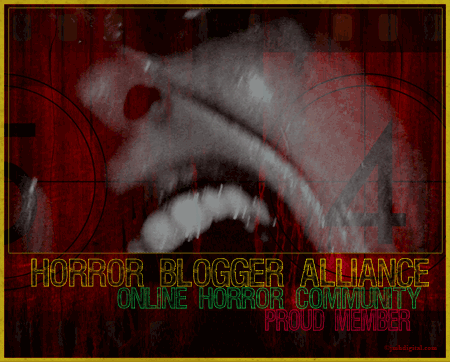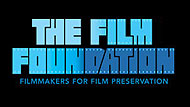One of my favorite contemporary filmmakers is Robert Zemeckis, a writer, producer, and director whose works often include state-of-the-art special effects. Although Steven Spielberg helped give him his start, Zemeckis’ career didn’t really take off until 1984’s Romancing the Stone became a surprise hit, and he followed that with Back To the Future, an enormous hit that was followed by two sequels and would later cement his legacy. In the ’90s, he turned to more dramatic fare with films like Forrest Gump and Contact. In the last decade, he helped advance performance capture techniques for CG-animated films, and he has now returned to live-action film-making with Flight, which opens this Friday (Nov. 2nd). The focus of this appreciation will be on the good films Zemeckis has made (I’m leaving out Death Becomes Her and What Lies Beneath for obvious reasons). The films I will include are: I Wanna Hold Your Hand, Used Cars, Romancing the Stone, Back To the Future, Who Framed Roger Rabbit, Back To the Future Part II, Back To the Future Part III, Forrest Gump, Contact, Cast Away, The Polar Express, Beowulf, and A Christmas Carol.
1978’s I Wanna Hold Your Hand: Zemeckis’ feature-length directorial debut,  and co-written by him and Bob Gale (one of many writing collaborations they’ve had). The film centers on four New Jersey girls who head out to New York City on the day the Beatles first appeared on The Ed Sullivan Show (February 9, 1964). Executive produced by Steven Spielberg, the film was critically acclaimed but was a flop at the box office. The cast included Nancy Allen, Marc McClure, Eddie Deezen, and Dick Miller. 17 Beatles songs were used, and six others (that were published after 1964) were referenced as in-jokes throughout the film.
and co-written by him and Bob Gale (one of many writing collaborations they’ve had). The film centers on four New Jersey girls who head out to New York City on the day the Beatles first appeared on The Ed Sullivan Show (February 9, 1964). Executive produced by Steven Spielberg, the film was critically acclaimed but was a flop at the box office. The cast included Nancy Allen, Marc McClure, Eddie Deezen, and Dick Miller. 17 Beatles songs were used, and six others (that were published after 1964) were referenced as in-jokes throughout the film.
1980’s Used Cars: Zemeckis’ directorial follow-up was this R-rated comedy cult classic (his only R-rated film  until 2012’s Flight). Kurt Russell stars as Roy, a devious car salesman who works for unsuccessful used car dealer Luke Fuchs (Jack Warden). Luke is feuding with his more successful brother Roy (also Warden), who owns a lot directly across the street and has come up with a horrific scheme to take over Luke’s lot. Co-starring Deborah Harmon, Gerrit Graham, and Michael McKean, this film was also a disappointment at the box office, leading to a four-year gap between this and his next film. It was after the release of this film that he and Bob Gale started to develop what would become their dream project.
until 2012’s Flight). Kurt Russell stars as Roy, a devious car salesman who works for unsuccessful used car dealer Luke Fuchs (Jack Warden). Luke is feuding with his more successful brother Roy (also Warden), who owns a lot directly across the street and has come up with a horrific scheme to take over Luke’s lot. Co-starring Deborah Harmon, Gerrit Graham, and Michael McKean, this film was also a disappointment at the box office, leading to a four-year gap between this and his next film. It was after the release of this film that he and Bob Gale started to develop what would become their dream project.
1984’s Romancing the Stone: Zemeckis finally achieved a  hit at the box office with this comedy about a writer (Kathleen Turner) who unwittingly teams up with a mercenary (Michael Douglas) to find her missing sister. This was an important film for Zemeckis (as a director) as well as Douglas (as an actor and not just producer) and Turner (as an actress who could do comedy as well as drama). This film also marked Zemeckis’ first collaboration with composer Alan Silvestri, who has scored every Zemeckis film ever since. 20th Century Fox thought this film was going to be a disaster after viewing a rough cut and promptly fired Zemeckis from Cocoon, which would’ve been his next directorial effort. They gave that job to Ron Howard, but I’m sure Zemeckis didn’t feel too bad about it, especially since it freed him to continue pursuing his dream project, which led to…
hit at the box office with this comedy about a writer (Kathleen Turner) who unwittingly teams up with a mercenary (Michael Douglas) to find her missing sister. This was an important film for Zemeckis (as a director) as well as Douglas (as an actor and not just producer) and Turner (as an actress who could do comedy as well as drama). This film also marked Zemeckis’ first collaboration with composer Alan Silvestri, who has scored every Zemeckis film ever since. 20th Century Fox thought this film was going to be a disaster after viewing a rough cut and promptly fired Zemeckis from Cocoon, which would’ve been his next directorial effort. They gave that job to Ron Howard, but I’m sure Zemeckis didn’t feel too bad about it, especially since it freed him to continue pursuing his dream project, which led to…
1985’s Back To the Future: The film that Zemeckis will be most remembered for. Young Marty McFly (Michael J. Fox) accidentally travels back in time to 1955 in a DeLorean time machine invented by his friend Doc Brown (Christopher Lloyd). When Marty realizes that his encounters with his young parents have altered his future, a younger Doc Brown helps him try to set things right and get him back to the future. A big critical and box office hit domestically as well as internationally, this film made Michael J. Fox (who had replaced Eric Stoltz) a star. The film would garner four Oscar nominations, including one for Zemeckis and Bob Gale for their screenplay (the film eventually won for Best Sound Editing). The film would be eventually followed by two sequels in 1989 and 1990.
1955 in a DeLorean time machine invented by his friend Doc Brown (Christopher Lloyd). When Marty realizes that his encounters with his young parents have altered his future, a younger Doc Brown helps him try to set things right and get him back to the future. A big critical and box office hit domestically as well as internationally, this film made Michael J. Fox (who had replaced Eric Stoltz) a star. The film would garner four Oscar nominations, including one for Zemeckis and Bob Gale for their screenplay (the film eventually won for Best Sound Editing). The film would be eventually followed by two sequels in 1989 and 1990.
(To be continued in: Robert Zemeckis: An Appreciation Part Two)







Pingback: Robert Zemeckis: An Appreciation Part Two | THE CINEMATIC FRONTIER